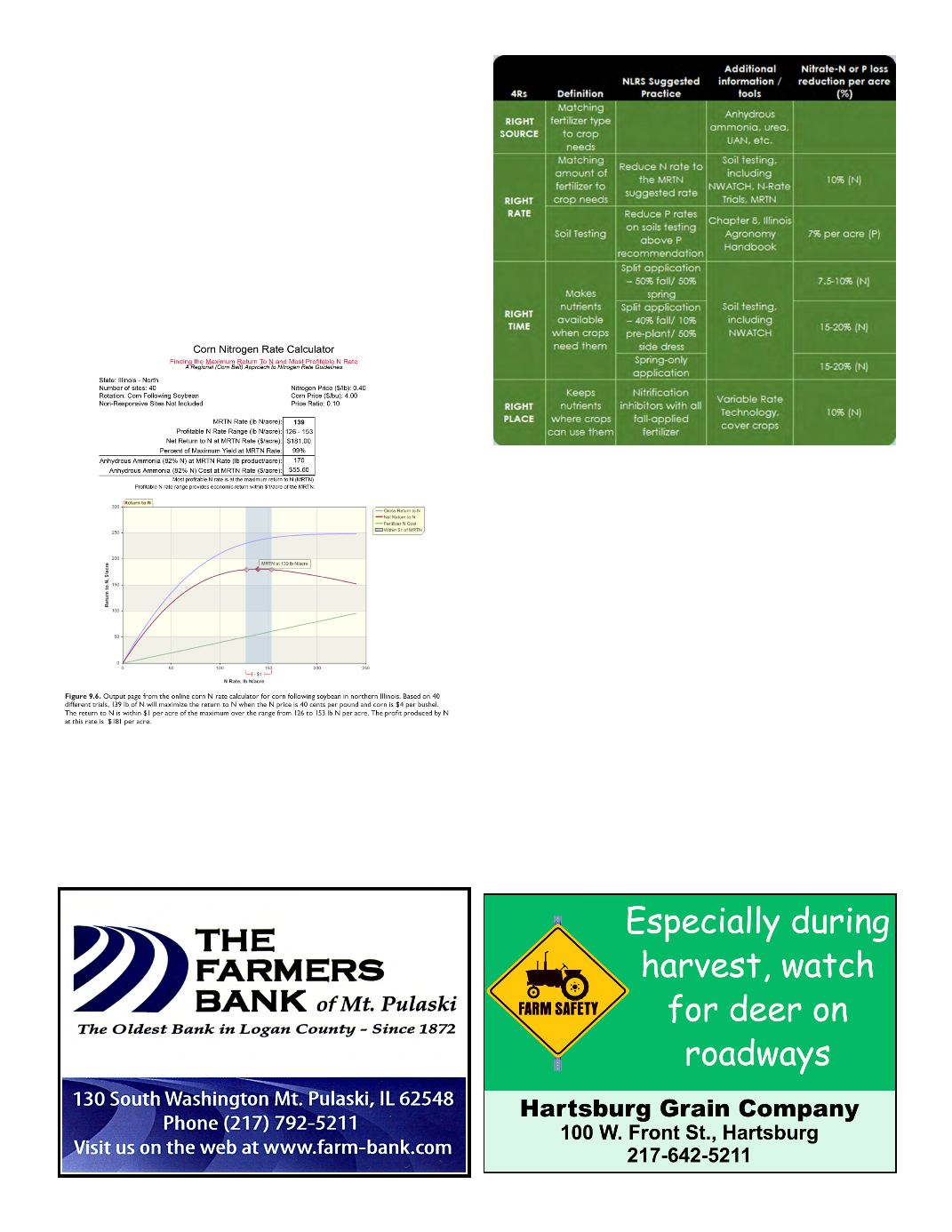

2016 Logan County Fall Farm Outlook Magazine
Lincoln Daily News
Oct. 27, 2016
43
Continued ►
About two-thirds of the N in a corn plant ends up in
the grain.
A 200-bushel crop would have about 240 pounds of N
in the plants before harvest.
This is 1.2 pounds N per bushel, the factor used
to convert proven or expected yield into N rate
recommendations
- “1.2 is the most [we] should do.” -
While soil type and condition, which influences the
availability of N, are steady factors in a given field;
there will always be a bit of a gamble as the weather
- rains and temperatures - play a big factor in how
much N is available when a plant needs it most.
Year 1 - University of Illinois 2014 N-Watch field
trials conclude:
• Getting the “right” N rate, timing, form, and
placement is possible, but the end result is and
will remain inexact – The list of N practices that
belong on (or can’t yet be taken off) the 4R list might
be longer than we might think
• We can’t assume loss of early applied N, (but
should be ready to respond after loss)
• We can’t assume an advantage to late applied N
• Common sense says: start with the MRTN rate
and build a “safe” N system – one without big
dangers of deficiency or loss. The newest field
tests and data studies now focus on when yields are
maximized to the cost of applied N (MRTN).














